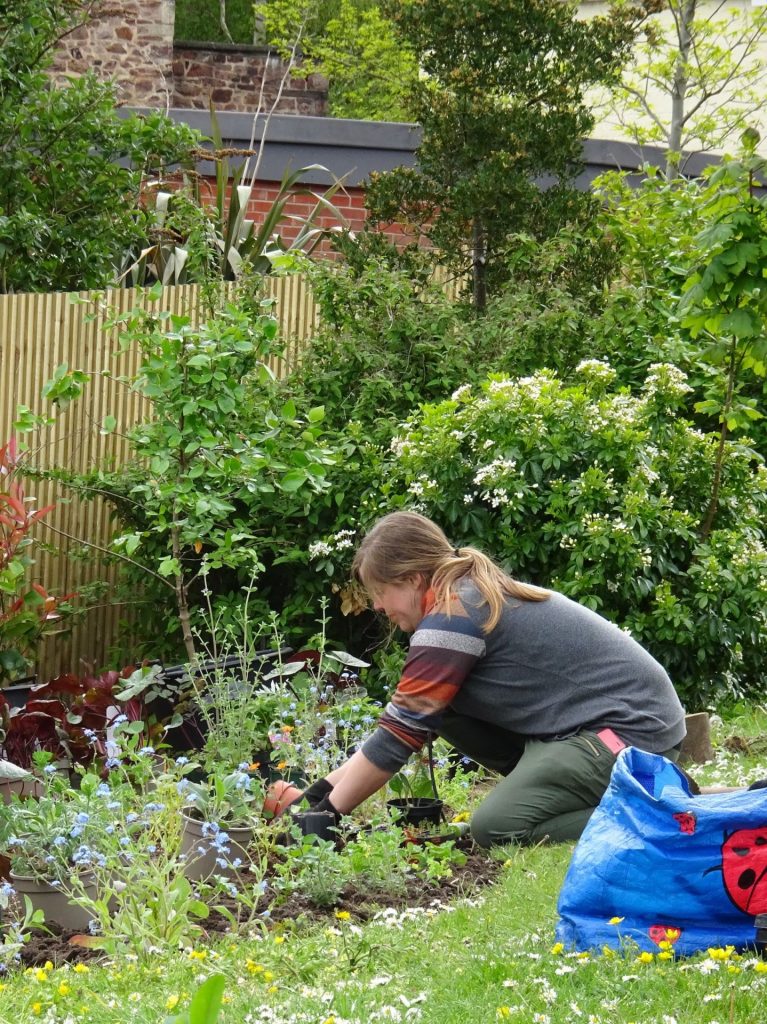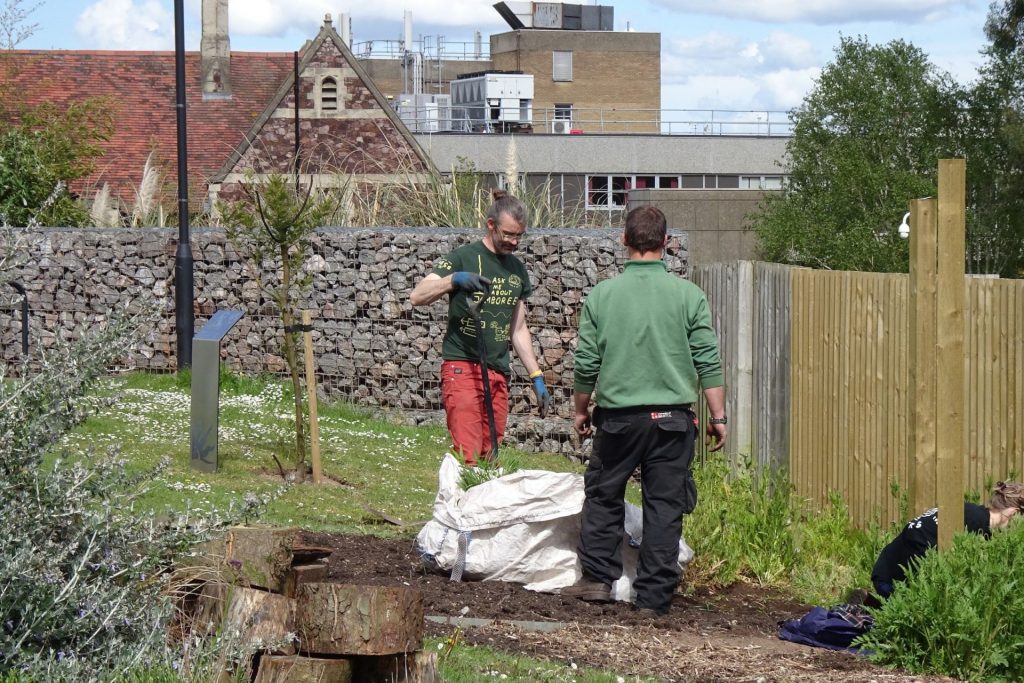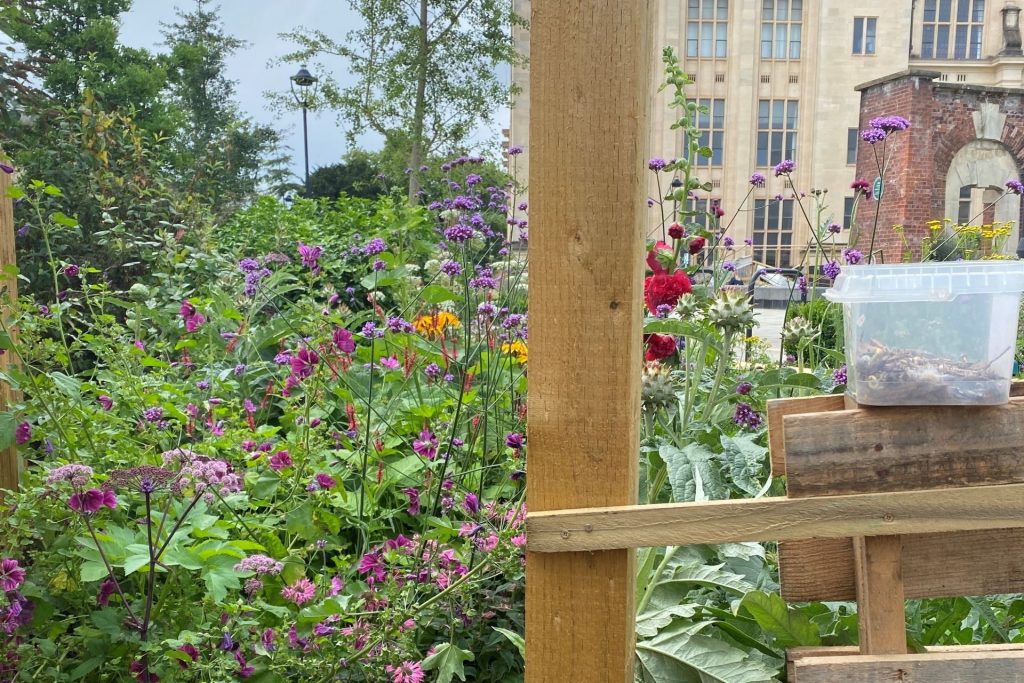By Paul Hurley and Charli Clark.
Over the past six months, we’ve been working on (de)Bordering, a project exploring the languages of environmentalism and migration. It is a project quite unlike any we’ve done before! As the artists in the project, we’ve been collaborating with academics and having conversations with students, gardeners and third sector organisations to explore what it means to create hostile and hospitable environments – for migratory humans and nonhumans. The result is the establishment of two plots and structures in Royal Fort Gardens at the University of Bristol, which officially launches on 22nd September.

It’s been an interesting moment to begin such a project. Throughout the COVID-19 pandemic many people have found a renewed appreciation of gardens, parks and ‘nature’, and at the same time we’ve seen increasing efforts in universities and in horticulture to decolonise the ways in which knowledge, education and engagement are practiced. As we write this blog, the news is filled with images of thousands of people attempting to leave Afghanistan as it reels from the destabilising departure of US troops and return of Taliban rule, and world leaders are preparing for COP26, where decisions about climate change will impact on global ecosystems for generations. That our lives are entangled with those of other humans and nonhumans has never felt more important.
We’ve both been involved in collaborative projects before with other artists, communities and academics. And as well as working as artists, we both have other hats to wear – Charli as a professional gardener and Paul as a cultural geographer. We came to the project with curiosity and a keenness to explore the process of collaboration as well as its product. Our work with the academic team from MMB – Bridget Anderson, Katharine Charsley and Nariman Massoumi – began towards the end of the winter 2021 lockdown, initially via video calls and in time via convivial in-person conversations at the plot. We discussed their research in the field of (human) migration and mobilities and their instigation of the (de)Bordering project, which has been funded and supported by the Brigstow Institute. Into the mix we brought our own ideas from participatory art and performance, ecological thinking and more-than-human geographies, and together we started to dig over the ground on which the project was to grow.

Collaboration can work in many different ways – through processes of exchange, of synthesis, of partnership or of negotiation. And while our collective creation of (de)Bordering has involved all these things, it’s also taken on a life of its own – akin to that of Green’s (2001) ‘third hand’ of collaboration, in which the identities and authorship of the artists become (intentionally) marginalised. Given that the two plots – the Hearth, a living studio/ outdoor classroom and events space, and the Hide, a space for observation and contemplation – are designed in part for nonhuman users, the decentring of the human artists is perhaps unsurprising.
Our designs for the Hearth and the Hide and the planting around them take into account not only the aesthetics and practicalities of human hospitality, but their capacity to be attractive and useful for migratory birds and insects (see more about these species in Bridget’s blog about the plots). And as with all best laid plans, ours have had to be adapted to circumstances beyond our control. Reduced availability (and increased prices) of plants and timber – due to Brexit- and COVID-related border and labour issues – have forced certain substitutions and modifications. While for us such impacts are an inconvenience, they bring into focus our connection with those who might experience them much more deeply – through lives disrupted, families separated, habitats damaged and businesses lost.

In the few months since the plots have been installed, we have already seen them develop as ecosystems, as communities of humans and nonhumans. While most of the hundreds of plants we planted have survived, a couple have not. We have noticed some growing bigger than others (some will undoubtedly outgrow the plot) and, in some places, weeds (‘a plant in the wrong place’) returning or proliferating. We have witnessed international students helping to construct the Hearth and sharing poetry around the firepit, and we have seen pollinators around the Hide being observed by microbiology researchers.
We have also staged a number of human encounters in these shared environments, in the form of curated conversations between academic and non-academic specialists. Bringing our attention to common ground or otherwise around migration-related issues, these dialogues have been recorded and linked to QR codes located around the plots. It is our hope that these conversations – be they they excited, difficult, moving, provocative or impassioned – will be the beginning of many around (de)Bordering.
You are warmly invited to visit the Hearth and the Hide and we encourage you to start your own conversations about human and nonhuman migration, and to reflect on your place within it.

